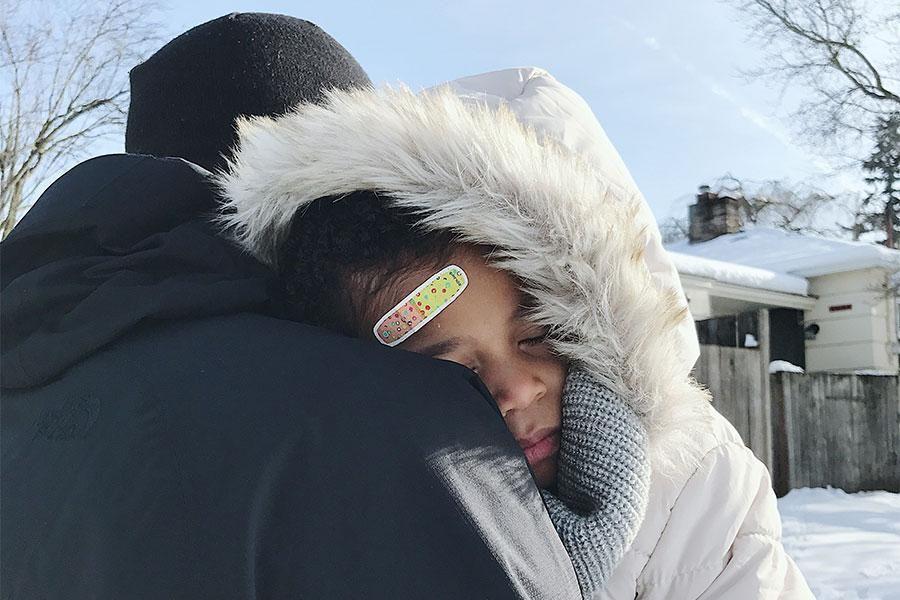TODDLER
Helping Upset Tots - Your 2 Most Important Tools!
Ease toddler tantrums by learning to communicate with your little guy.

Written by
Dr. Harvey Karp

SHARE THIS ARTICLE
PARENT PICKS
Bestsellers
TODDLER

Written by
Dr. Harvey Karp

SHARE THIS ARTICLE
Bestsellers
Toddlers aren’t merely big babies—or small big-kids. They’re more like primitive visitors from the Stone Age. They wipe their noses with their arms, pee on the grass, push and scratch, and are barely civilized enough to say please and thank you!
As children pass their first birthday, their increasing curiosity, climbing, willfulness and impatience become an explosive combination! Keep in mind that tantrums are not usually deliberate misbehavior (although kids tantrum more if wailing gets them what they want), but that your toddler’s fragile balance can be pushed over the edge by many common circumstances: routine changes (like a missed nap), life changes (like a new sibling), stimulants (sweets, caffeine, chocolate), stresses (hunger, noise, frustration), or simply being cooped up too long.
The biggest mistake parents usually make is responding to tantrums with tactics designed for either little babies or older children. An infant intent on grabbing the cat’s tail can often be distracted simply by handing her a fresh toy or taking her outside. Not so a tenacious toddler. Her memory is longer and her will is stronger! Likewise, patiently explaining why cookies aren’t allowed before dinner may work well with older kids, but it’s sure to flop with an irritated, insistent toddler. The simple truth is that toddler tantrums require toddler solutions.
So if your child is a kind of caveman, I like to think that your job is like being an ambassador from the 21st Century to the “Neanderthal people.” Ambassadors dole out lots of generosity and respect to build great working relationships. And you can do this by mastering two basic techniques: The Fast Food Rule and Toddler-ese.
The Fast Food Rule (FFR) says “whoever is hungriest for attention gets to talk first.” This is the golden rule for speaking to anyone who’s upset (from babies to biggies). We calm fastest and feel most loved (children and adults) when our upsets are acknowledged with understanding and respect. So for the FFR to work, you must repeat the message using your face, voice, and heart. That’s why, to someone who is really emotional …what you say is almost meaningless if you don’t say it in the right way. You will be much more successful calming your toddler’s tizzies once you begin translating your words into your young child’s primitive lingo – Toddler-ese! Toddler-ese can be spoken in three simple steps:
These techniques may feel weird at first, but believe it or not, you’re already using the FFR and Toddler-ese without realizing it. For example, if your 3-year-old climbed the baby slide, all by herself, and beams at you with pride, would you feel odd smiling, applauding, and happily chirping “Yea!! Yea!! Good job!! You did it! You did it! Yea!”? Well, that’s Toddler-ese. Now try it sometime when your child is mad or sad. You’ll be amazed by the look on her face! She’ll feel respected, understood, and loved. Which are the best results in being an effective communicator and taming tantrums!
Disclaimer: The information on our site is NOT medical advice for any specific person or condition. It is only meant as general information. If you have any medical questions and concerns about your child or yourself, please contact your health provider. Breastmilk is the best source of nutrition for babies. It is important that, in preparation for and during breastfeeding, mothers eat a healthy, balanced diet. Combined breast- and bottle-feeding in the first weeks of life may reduce the supply of a mother's breastmilk and reversing the decision not to breastfeed is difficult. If you do decide to use infant formula, you should follow instructions carefully.